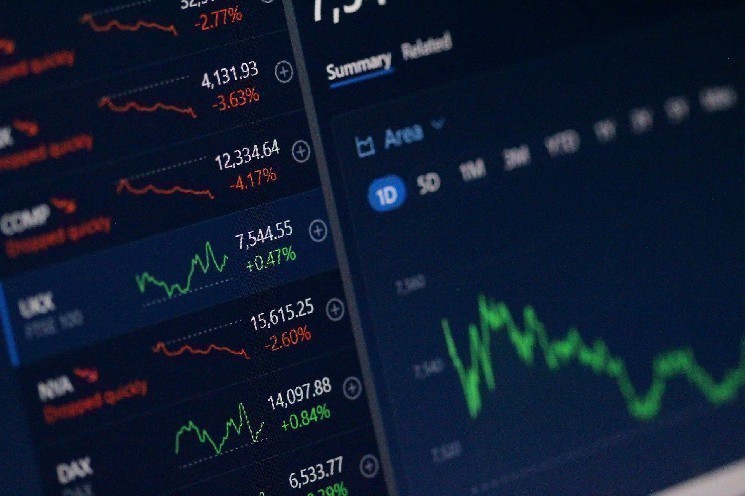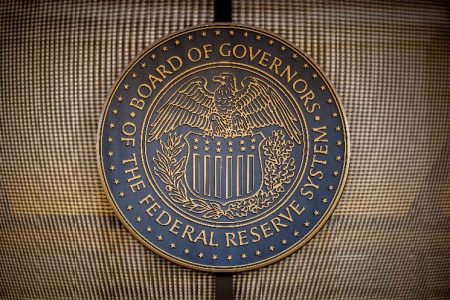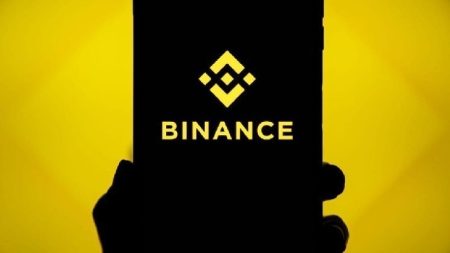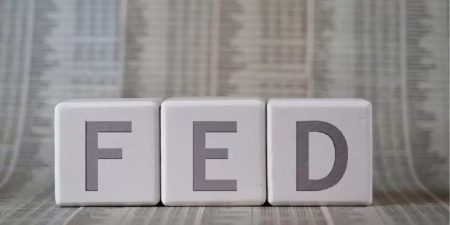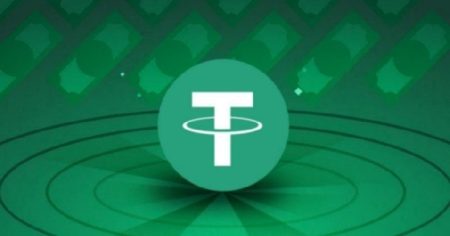Solowin Holdings Completes $350 Million Acquisition of Stablecoin Provider AlloyX, Bolstering Emerging Markets Strategy
Strategic Acquisition Positions Hong Kong-Based Financial Firm for Digital Asset Expansion
In a significant move that signals growing institutional interest in blockchain-based financial infrastructure, Solowin Holdings (SWIN) has finalized its $350 million acquisition of stablecoin infrastructure provider AlloyX. The all-stock transaction, announced earlier this week, represents one of the largest corporate investments in stablecoin technology this year and underscores the increasing mainstream adoption of digital asset infrastructure across global financial markets.
The Hong Kong-based investment holding firm, which trades publicly on international exchanges, revealed in a detailed press release that the acquisition strategically integrates AlloyX’s comprehensive infrastructure – including its stablecoin application platform, real-world asset (RWA) tokenization tools, and global payments network – into Solowin’s existing financial ecosystem. This integration aims to strengthen Solowin’s technological capabilities while accelerating its expansion into emerging markets where traditional banking infrastructure remains underdeveloped.
“This acquisition represents a critical milestone in our vision for a new financial ecosystem centered on stablecoins,” said Peter Lok, Chairman and CEO of Solowin Holdings. “By incorporating AlloyX’s cutting-edge technology and talented team into our organization, we’re positioning ourselves at the forefront of the digital transformation reshaping global finance.” The deal’s structure includes a 12-month lock-up period for AlloyX’s founding team and strategic investors, along with an incentive mechanism tied to specific valuation milestones – a provision that analysts interpret as a vote of confidence in the long-term potential of the acquired technology.
Documents filed with the Securities and Exchange Commission (SEC) characterize AlloyX as an “early-stage company with limited history” that had “yet to generate revenue” as of March 31. However, industry experts note that the company’s stablecoin payment infrastructure and real-world asset tokenization capabilities represent significant intellectual property value despite its pre-revenue status. This acquisition pattern mirrors similar moves in the technology sector, where established firms often acquire promising startups for their innovative technologies and specialized talent rather than their immediate revenue potential.
The transaction comes amid explosive growth in the global stablecoin ecosystem, which now represents a $280 billion market capitalization according to data from DeFiLlama. Stablecoins – cryptocurrencies designed to maintain a stable value relative to fiat currencies like the US dollar – have emerged as a critical bridge between traditional finance and decentralized financial systems. While Tether’s USDT and Circle’s USDC continue to dominate the sector with over 80% market share, institutional players are increasingly developing proprietary stablecoin infrastructure to capitalize on the efficiency gains offered by blockchain-based payment systems.
For Solowin Holdings, the AlloyX acquisition represents a strategic pivot toward financial technology at a time when global markets are increasingly embracing digital assets. Market analysts suggest that the integration of AlloyX’s stablecoin infrastructure could position Solowin to develop competitive advantages in cross-border payments, remittances, and financial services for underbanked populations – particularly in Southeast Asian and African markets where the company has signaled interest in expanding its operations. As stablecoins continue their transition from cryptocurrency niche to mainstream financial infrastructure, acquisitions like this one may become increasingly common as traditional financial institutions seek to modernize their technological capabilities and prepare for an increasingly digital financial landscape.
The Growing Institutional Embrace of Stablecoin Technology
Financial institutions worldwide are increasingly recognizing stablecoins as transformative tools for international settlements and payments. Unlike traditional banking systems that often require multiple intermediaries and can take days to process cross-border transactions, stablecoin infrastructure enables near-instantaneous transfers at a fraction of conventional costs. This efficiency has particular relevance for remittance corridors between developed and emerging economies, where transaction fees have historically consumed significant percentages of the amounts being transferred.
“The acquisition of AlloyX positions Solowin to capitalize on the inefficiencies in traditional banking systems,” explains Dr. Mei Zhang, financial technology researcher at the Hong Kong University of Science and Technology. “By integrating stablecoin infrastructure, they’re essentially building a parallel financial system that can operate alongside and eventually interoperate with traditional banking networks, but with significantly reduced friction for cross-border movements of capital.”
The stablecoin sector has evolved substantially from its origins as a trading tool within cryptocurrency markets. While initial use cases centered around providing traders with dollar-denominated liquidity on crypto exchanges, stablecoins have progressively demonstrated utility for international remittances, merchant payments, and as interest-bearing assets within decentralized finance protocols. This functional expansion has attracted interest from traditional financial institutions seeking to modernize their infrastructure without fully abandoning fiat currency systems.
What differentiates AlloyX’s approach, according to industry observers, is its focus on real-world asset tokenization alongside stablecoin infrastructure. This complementary technology allows for the representation of traditional financial assets like treasury bills, corporate bonds, and real estate on blockchain networks. The combination potentially allows Solowin to develop financial products that leverage both the efficiency of blockchain-based transfers and the stability of traditional asset-backed instruments.
“Tokenized real-world assets represent perhaps the most promising convergence of traditional and decentralized finance,” notes William Chen, blockchain strategist at Asia Financial Partners. “By acquiring capabilities in both stablecoins and RWA tokenization, Solowin is positioning itself to offer institutional-grade financial products that maintain compliance with regulatory frameworks while delivering the technological advantages of blockchain systems.”
Regulatory Considerations and Market Implications
The acquisition comes amid evolving regulatory scrutiny of stablecoin issuers across major financial jurisdictions. In the United States, the Securities and Exchange Commission and the Treasury Department have signaled increased oversight of stablecoin operations, with particular attention to reserve management practices and consumer protection measures. Similarly, regulators in Singapore, the European Union, and Japan have developed or proposed frameworks specifically addressing stablecoin issuance and operation.
Solowin’s expansion into stablecoin infrastructure necessarily navigates this complex regulatory landscape. The company’s press materials emphasize compliance as a core consideration in its stablecoin strategy, suggesting that AlloyX’s technology includes robust anti-money laundering and know-your-customer capabilities. This focus on compliance may represent a competitive advantage as regulatory requirements continue to evolve, particularly for institutions seeking to integrate stablecoins into regulated financial services.
“What we’re seeing is the professionalization of the stablecoin sector,” observes Sarah Johnson, partner at Global Financial Regulatory Advisors. “Early stablecoin projects often operated in regulatory gray areas, but acquisitions like this signal a transition toward institutional-grade implementations that prioritize compliance alongside technological innovation. This maturation is essential for stablecoins to achieve mainstream adoption within regulated financial services.”
Market reactions to the acquisition have been generally positive, with Solowin’s stock price increasing 7.3% following the announcement. Analyst reports highlight the strategic potential of the acquisition while noting the execution challenges inherent in integrating early-stage financial technology into established corporate structures. Several investment banks have maintained “buy” ratings on Solowin stock, citing the company’s forward-looking approach to digital asset integration.
As the stablecoin ecosystem continues its rapid expansion beyond its current $280 billion market capitalization, strategic acquisitions like Solowin’s purchase of AlloyX may accelerate. Traditional financial institutions increasingly recognize that blockchain-based payment infrastructure offers compelling advantages in transaction speed, cost, and transparency. This recognition, coupled with growing regulatory clarity, suggests that the boundary between traditional finance and digital asset systems will continue to blur as institutions seek technological advantages while maintaining regulatory compliance.
The acquisition ultimately reflects a broader trend: the normalization of blockchain technology within mainstream finance. What began as an experimental technology championed by cryptocurrency enthusiasts has evolved into infrastructure being seriously evaluated and implemented by publicly-traded financial institutions. For Solowin Holdings, the $350 million investment in AlloyX represents not just an acquisition, but a strategic bet on the future direction of global financial infrastructure.





